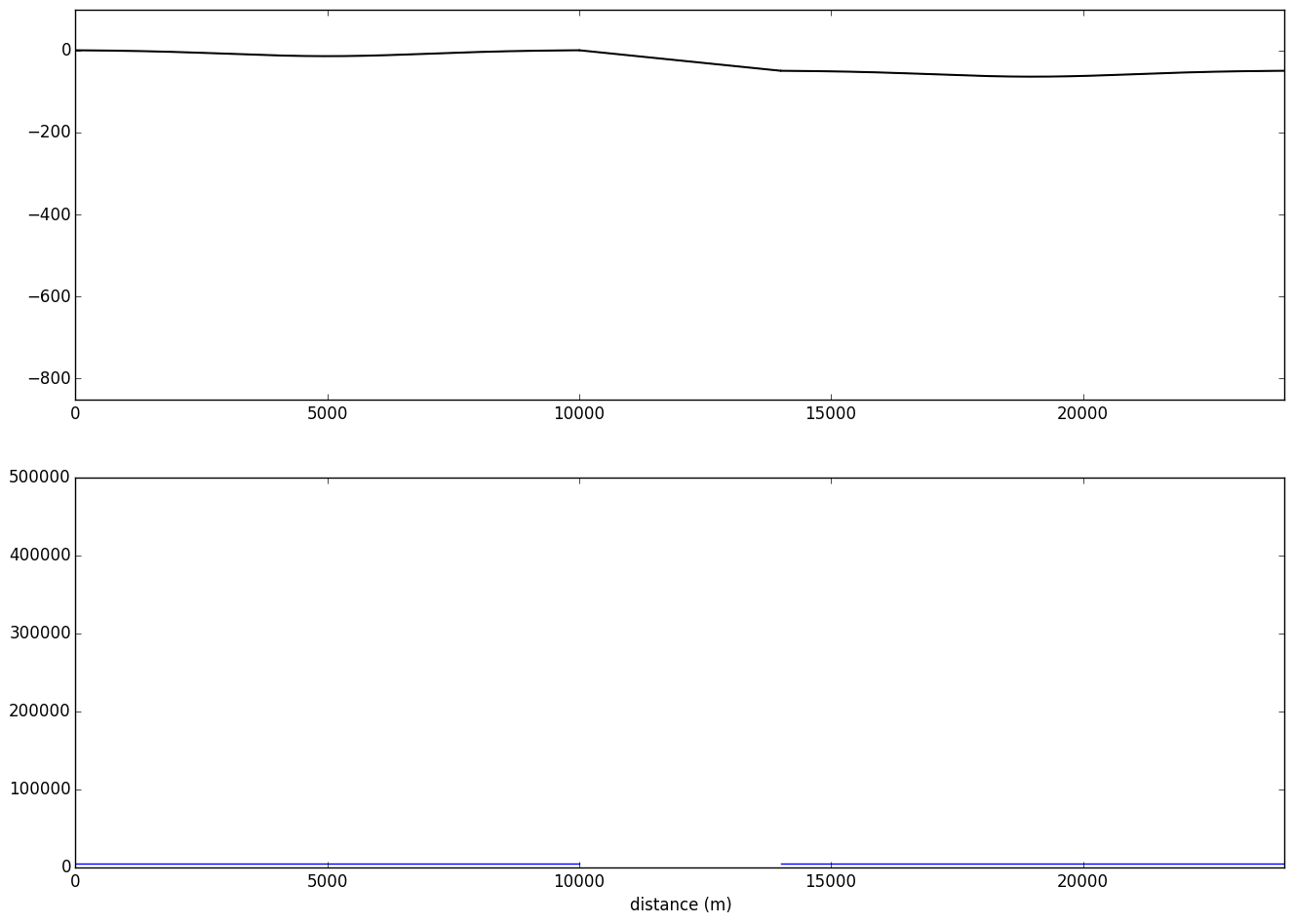These are animations that accompany our 2015 article on the stratigraphy of salt-withdrawal basins on the slope (Sylvester, Z., Cantelli, A., and Pirmez, C., 2015, Stratigraphic evolution of intraslope minibasins: Insights from surface-based model: AAPG Bulletin, v. 99, no. 6, p. 1099–1129). We have used a simple model that investigates the interplay between subsidence and sedimentation and helps in the understanding of how stratal termination patterns relate to variations in sediment input and basin subsidence. Conventional sequence stratigraphy focuses on what is happening on the shelf and the shelf edge; and the origin of stratal patterns that characterize the typical ‘slug diagram’ are not trivial to relate to the three main parameters that influence continental-margin stratigraphy: changes in sea level, sediment supply, and subsidence. Our minibasin model is simpler because (1) it only has two parameters: sediment supply and subsidence (the impact of sea level - if any - is included in the sediment supply curve); and (2) sedimentary layers are deposited horizontally during each time step. The basic idea is to investigate the geometries of a system that consists of a depression that deepens through time and sediment is deposited in it with a certain rate.
The animations shown here are of higher resolution and quality than the ones availbale from the publisher’s website.
Convergence:
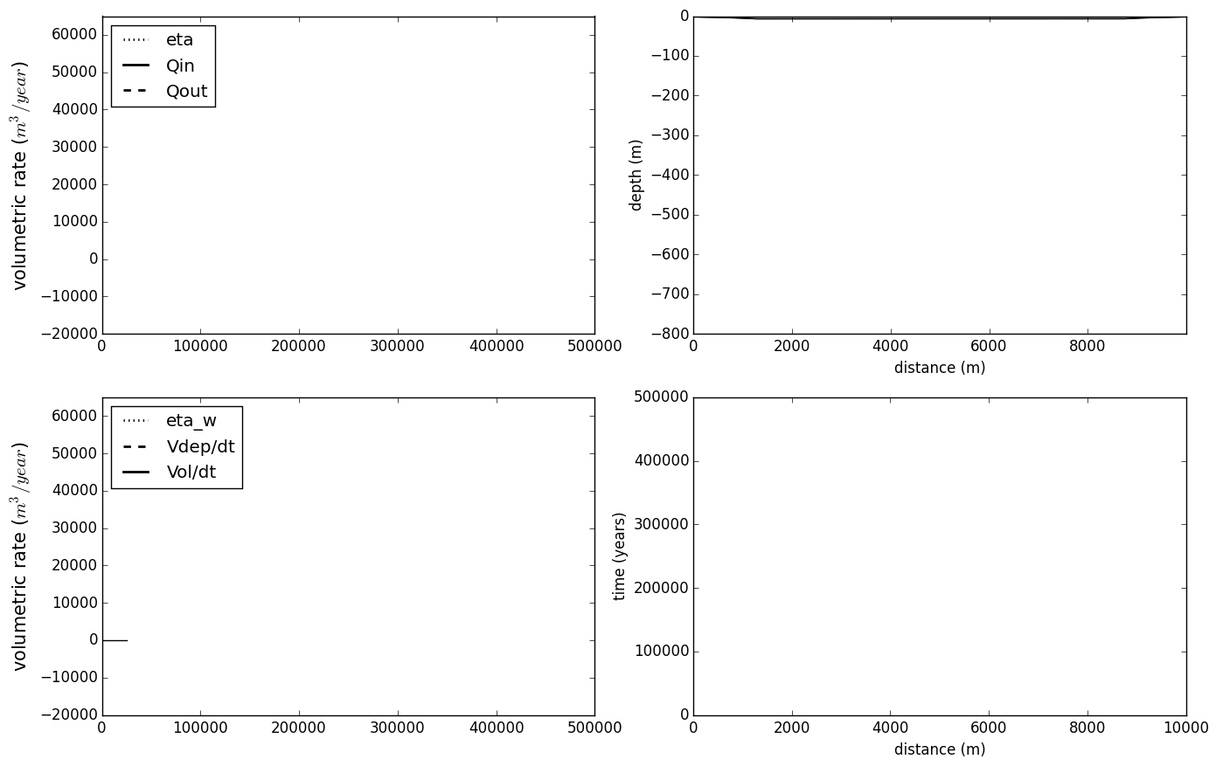
Onlap:
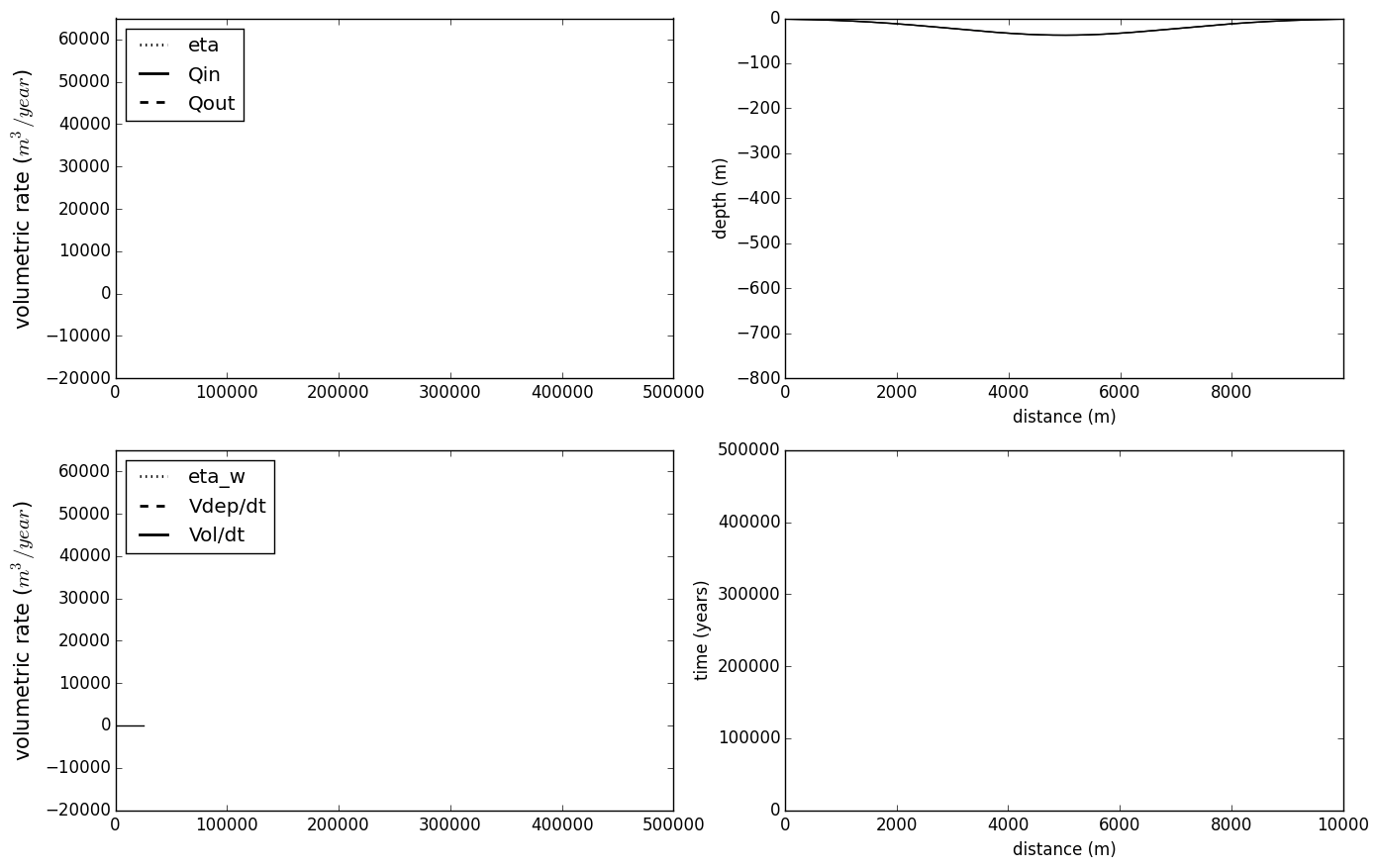
Sinusoidal input, no bypass:
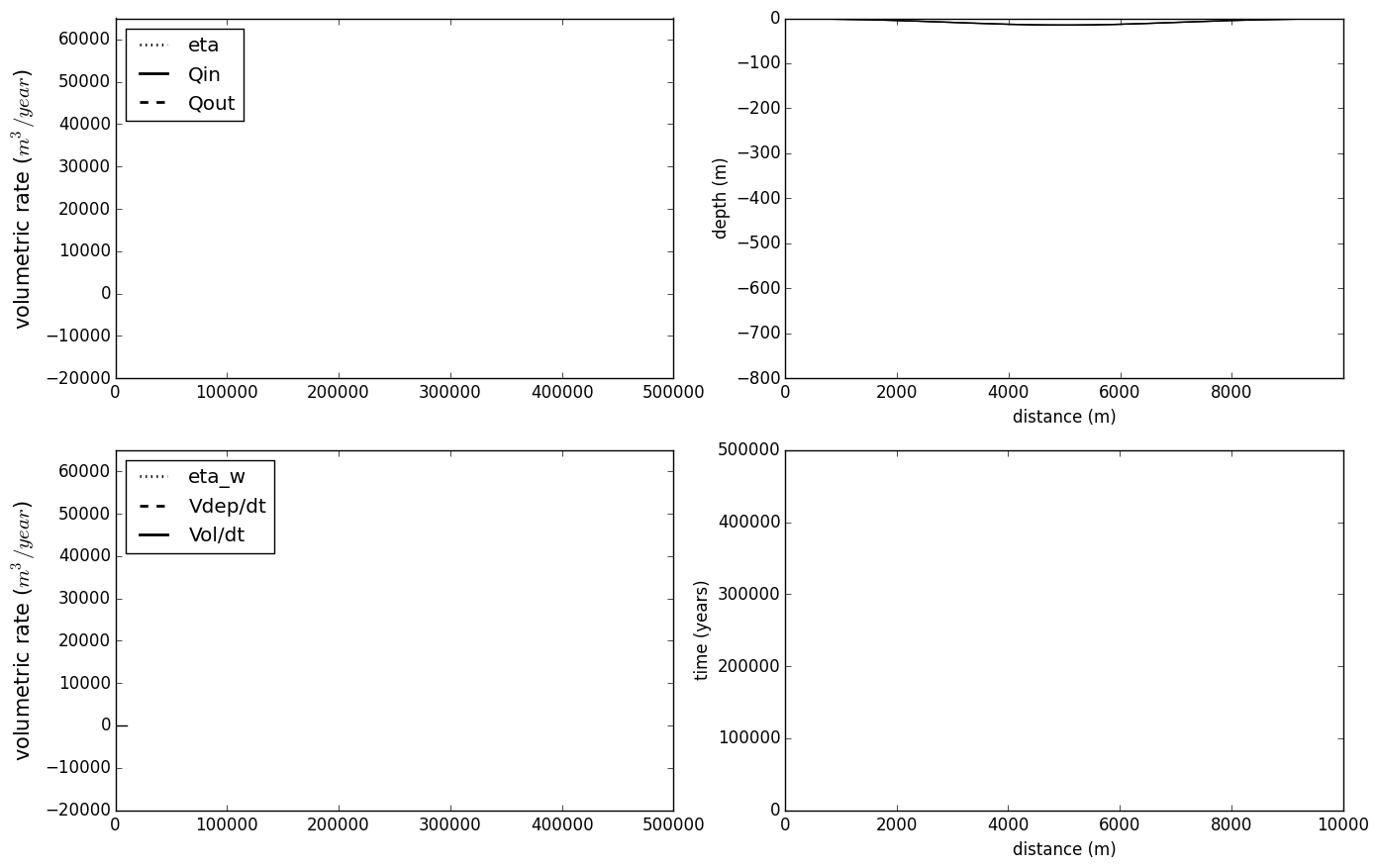
Sinusoidal input and bypass:
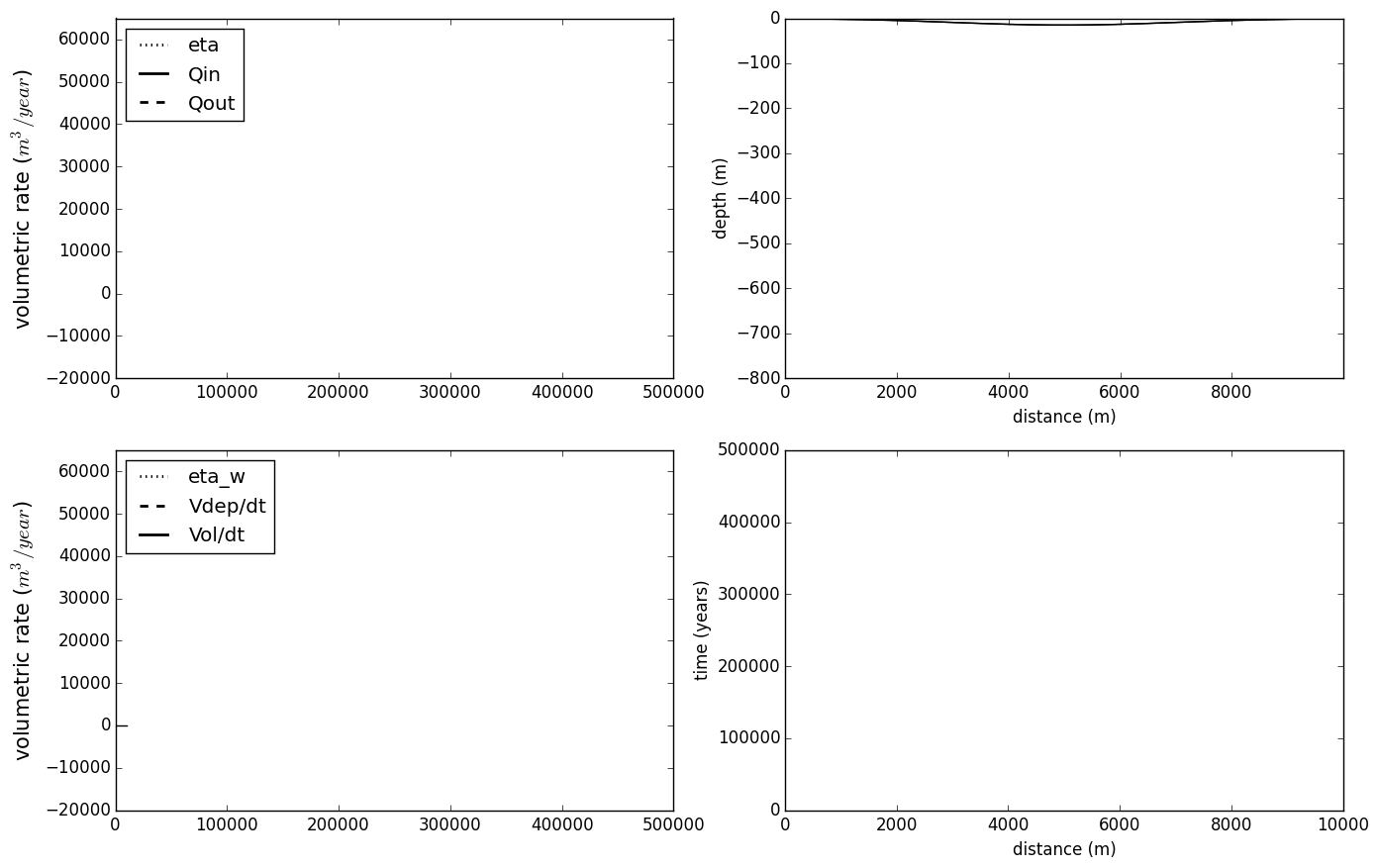
Constant-to-sinusoidal input, constant subsidence, no bypass:
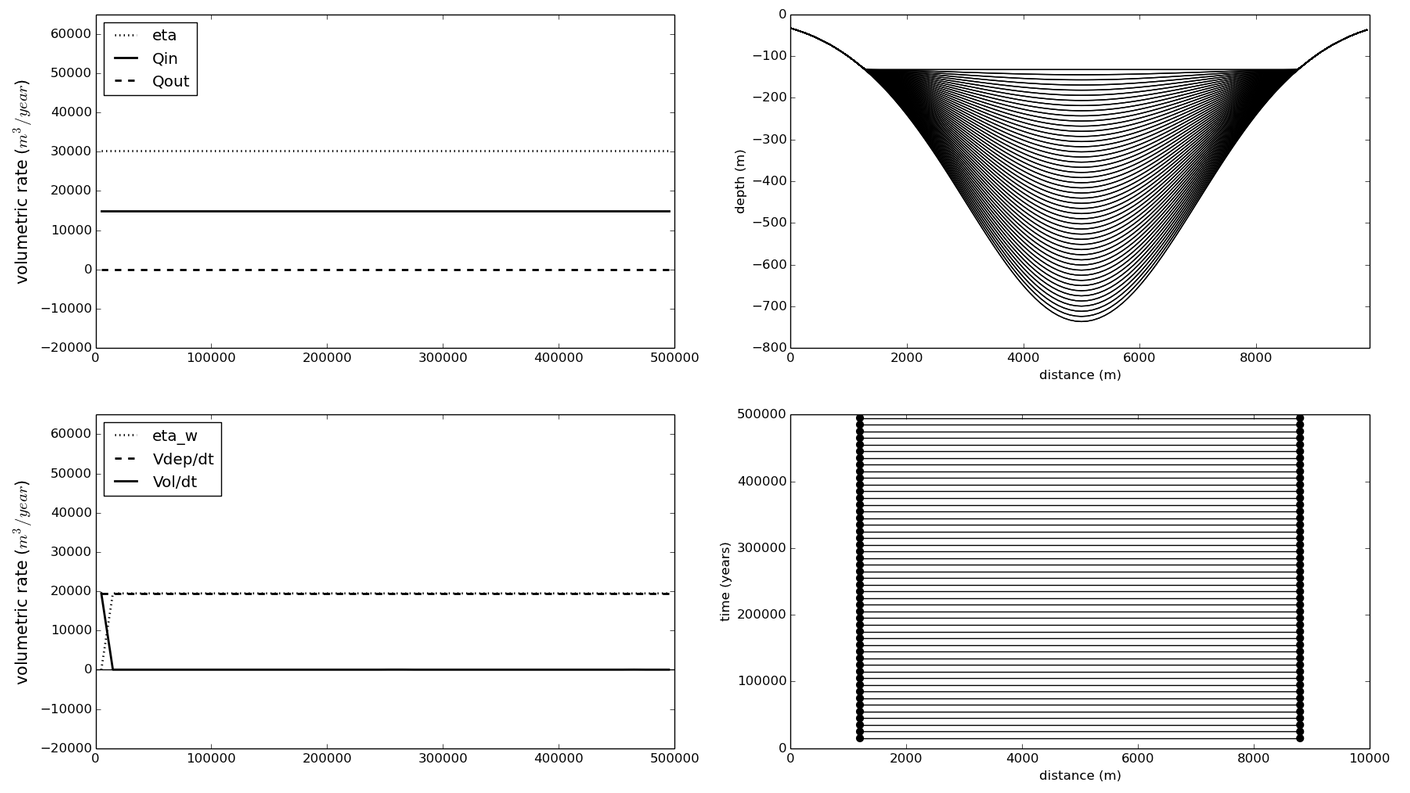
Constant-to-sinusoidal input, constant subsidence, and bypass:
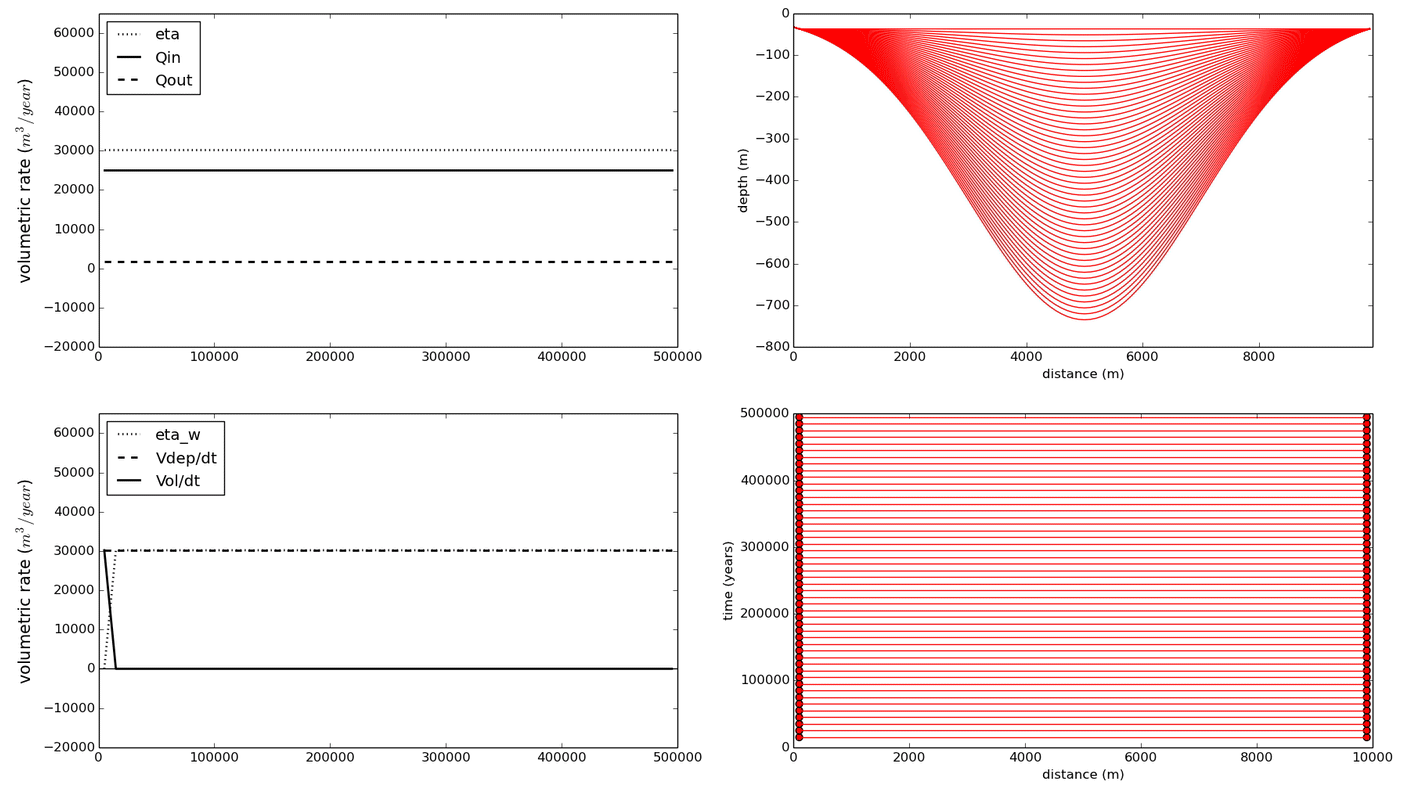
Constant-to-out-of-phase sediment input:
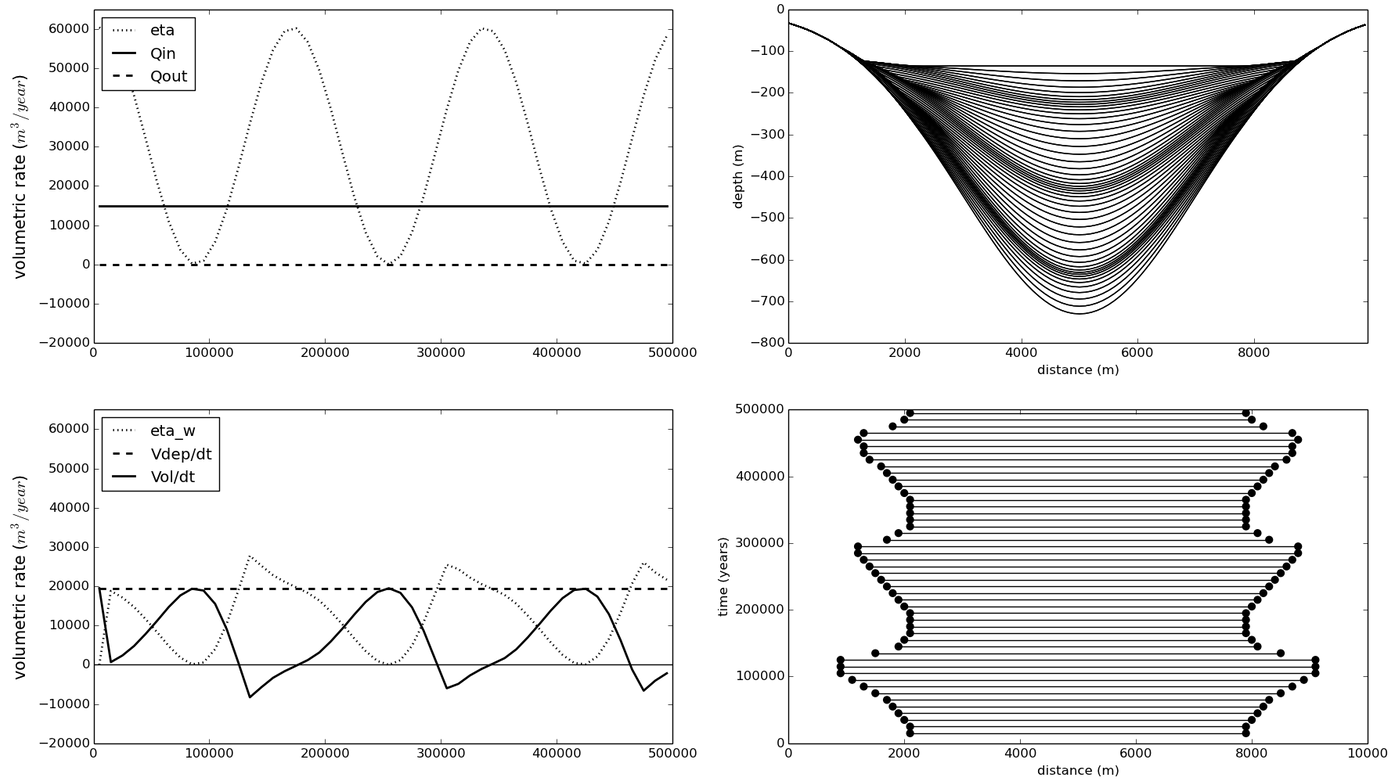
Subsidence and sediment input phases:
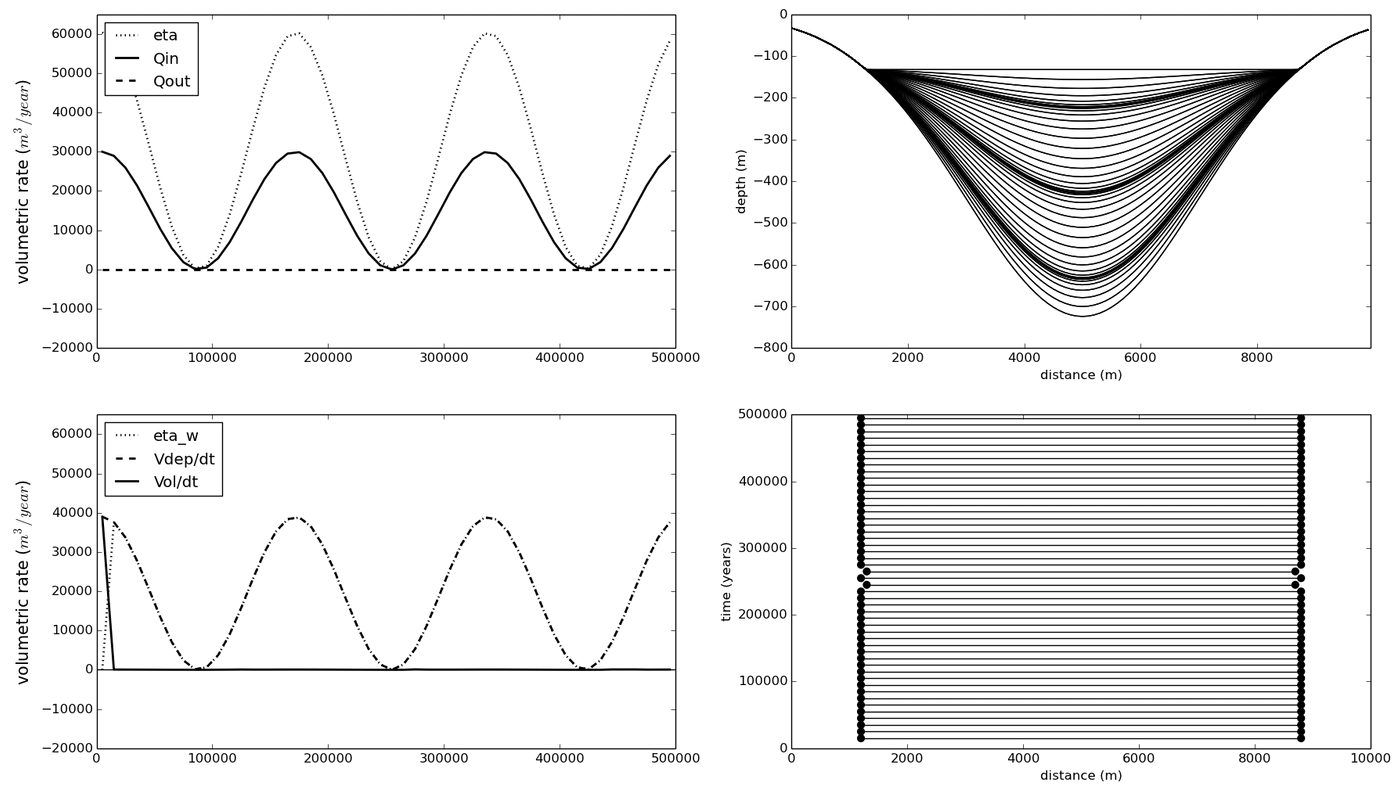
Static fill-and-spill:
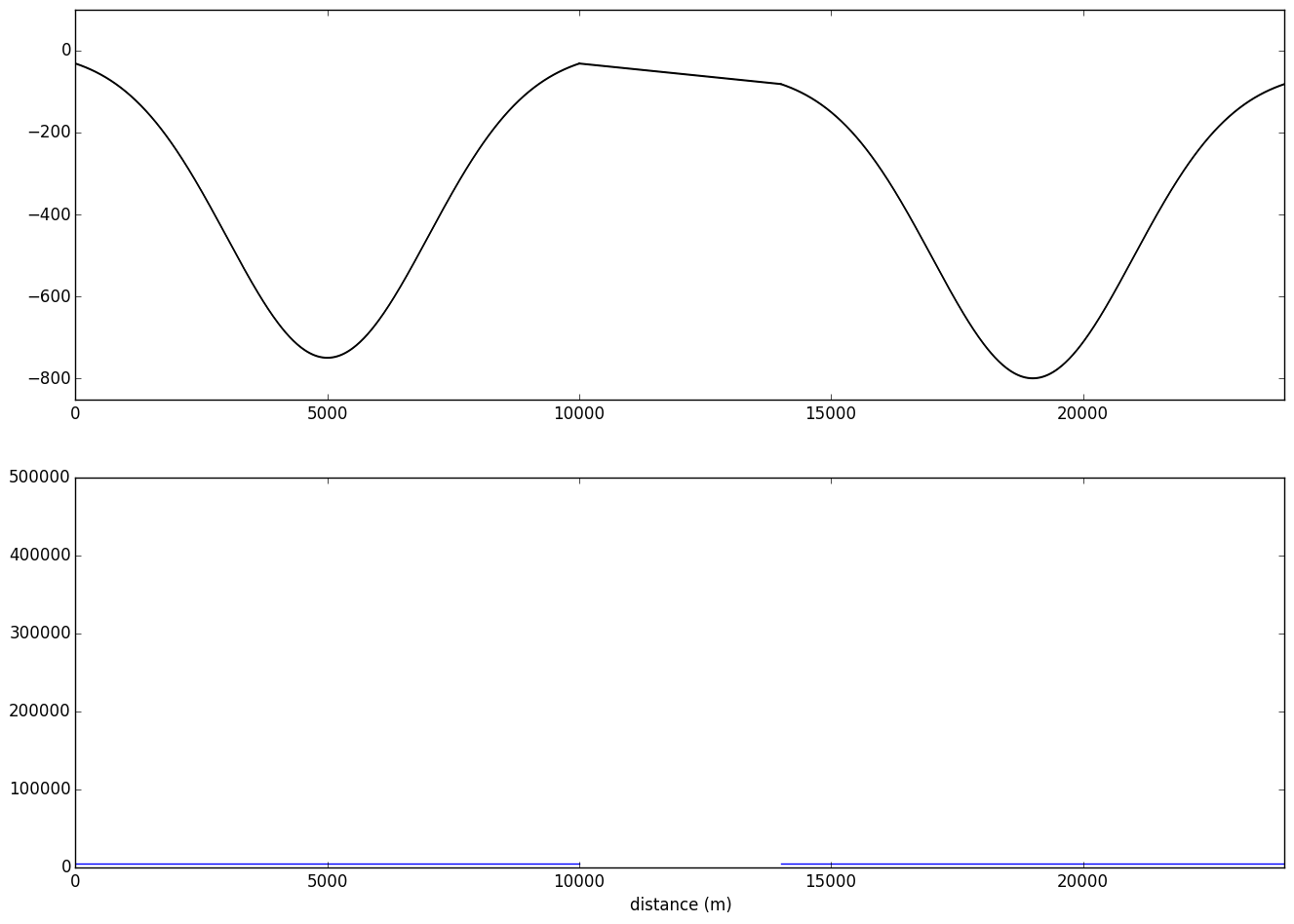
Dynamic fill-and-spill:
